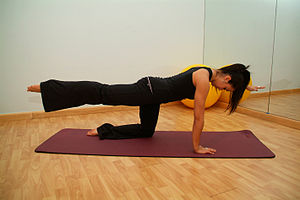| Muscles of the gluteal and posterior femoral regions. (Photo credit: Wikipedia) |
Another approach is to forego the aerobic activities altogether on the off days and focus on strength and flexibility. Because of the repetitive nature of running, many runners suffer from muscle imbalances that can lead to an increased risk of injury. By dedicating time to exercises that strengthen core muscles, for example, runners can maintain better posture as they get tired later in their runs, which will keep them faster and help them avoid injury.
Many runners also suffer from chronic tightness in their leg muscles. Over time, muscle tightness can lead to poor form and increased injuries. Stretching exercises can help to open up muscle tissues and allow the body to keep its optimal position when it comes time to run.
Pilates is one great way to combine the beneficial effects of stretching and strengthening in a single routine. Pilates can either be done at home as a floor-based exercise (there are numerous instructional DVDs that you can use to learn various Pilates workouts), or you can take Pilates classes at a gym and use a specialized piece of Pilates equipment called a “reformer.” Yoga also makes a great off-day workout for runners.
| Pilates (Photo credit: Wikipedia) |
Finding the appropriate exercise for your off days will involve a bit of experimentation. You can look to other runners for ideas on what exercises make sense, but ultimately you’ll need to try them out to see how they actually work for you.
Check back here tomorrow for a fun off-day workout.



No comments:
Post a Comment